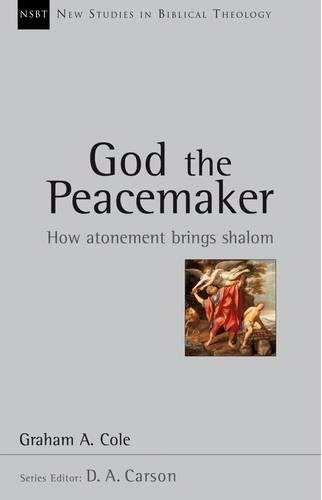About the Author
Graham A. Cole is Professor of Biblical and Systematic Theology at Trinity Evangelical Divinity School. He is the author of several books and numerous articles.
Introduction
This contribution to the New Studies in Biblical Theology series examines the atonement of Jesus Christ and how it secures and creates shalom. Cole’s treatment is a work of biblical theology that is well informed by systematics. Atonement is a central concept in the Scriptures and it is necessary to understand it if we are to make sense of the Bible’s storyline and God’s work in creation. Cole shows how the atonement is the linchpin in God’s plan for the universe. Christ’s atonement is absolutely essential for every spiritual blessing.
Table of Contents
Introduction
Chapter 1 The Righteous God of Holy Love
Chapter 2 The Glory and Garbage of the Universe
Chapter 3 The Great Need: Peace with God, with One Another, and for the Cosmos
Chapter 4 Foundations and Foreshadowings
Chapter 5 The Faithful Son
Chapter 6 The Death and Vindication of the Faithful Son
Chapter 7 The ‘Peace Dividend’
Chapter 8 Life between the Cross and the Coming
Chapter 9 The Grand Purpose: Glory
Chapter 10 Conclusion
Appendix: Questioning the Cross: Debates, Considerations and Suggestions
Summary
Chapter One
The Righteous God of Holy Love
God is holy love. In our contemporary society we have an easier time with the concept of love than we do with the concepts of holiness and righteousness. Yet if we are to understand God and his redemptive plan, we must understand him as he is in all of his perfections. It is always a temptation to reduce God to one key attribute and to minimize all that he is. Divine righteousness requires atonement and divine love provides it. Righteousness and justice are conceptually aligned, and righteousness refers to doing what is morally right in relationship (i.e. treating others as is right). Righteousness can be expressed in blessing and in judgment. The concept of holiness has different forces in different contexts. It can refer to the transcendent separateness of God and it can refer to God’s moral nature. Isaiah encountered the holiness of God in Isaiah 6, and it was in seeing the holy God that Isaiah realized how sinful he was and how deserving he was of God’s judgment. The holy God of the vision provided atonement for Isaiah’s sin. Divine holiness operates in righteousness (i.e. it does what is right), and this means that divine holiness can be fierce when confronted by wickedness. Holiness can also, however, act with compassion and mercy. God saves his people because he is the Holy One. In order for a sinful people to have fellowship and walk with a holy God, atonement needs to be made for their sin.
When God reveals his name to Moses in Exodus 34:6-7, the only attribute he mentions twice is love. It is because of his love that God redeems and carries Israel. The NT proclaims that God is love and acts out of love. In fact, it claims that love is known and experienced through the provision of atonement by Christ on the cross. The cross reveals to us the heart of God. Paul argued that the cross displays the love of God and that it also displays the righteousness of God. The Book of Hebrews shows that the cross displays the holiness of God. It describes how a holy God sent a holy priest to present a holy sacrifice to provide atonement. There is no conflict or contradiction between God’s attributes. Love must hate moral evil. It may be difficult for us to feel love and wrath at the same time towards the same object, but God is not to be reduced to the limits of human psychology.
Chapter Two
The Glory and Garbage of the Universe
We are paradoxical beings, the pinnacle of creation and its refuse. We are capable of incredible good and unthinkable evil. The biblical doctrine of man as created in the image of God accounts for our glory, and the biblical doctrine of sin accounts for our shame. Genesis teaches that human beings are uniquely created in the image of God, a reality that is not defined but which is clearly special. There is an ontological and a functional component to our image bearing. . ..
[To continue reading this summary, please see below....]The remainder of this article is premium content. Become a member to continue reading.
Already have an account? Sign In
Buy the books

God the Peacemaker: How Atonement Brings Shalom